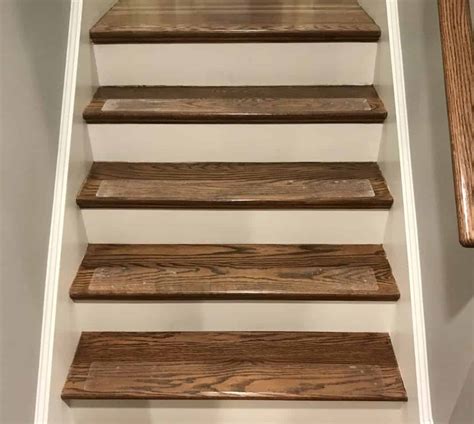How To Make Wooden Stairs Less Slippery
Ronan Farrow
Apr 01, 2025 · 3 min read

Table of Contents
How to Make Wooden Stairs Less Slippery: A Comprehensive Guide
Wooden stairs add warmth and character to any home, but their smooth surface can become a significant safety hazard, especially in high-traffic areas or during inclement weather. Slipping on wooden stairs can lead to painful falls and injuries. Fortunately, there are several effective methods to enhance the traction and safety of your wooden staircase. This guide provides a comprehensive overview of different techniques, enabling you to choose the best solution for your specific needs and aesthetic preferences.
Assessing Your Needs and Choosing the Right Solution
Before diving into the solutions, it's crucial to assess your specific needs and the characteristics of your wooden stairs. Consider these factors:
- Traffic: How frequently are the stairs used? High-traffic areas might require more robust solutions than those with infrequent use.
- Wood Type: Different wood types have varying textures and porosity, impacting the effectiveness of certain treatments.
- Aesthetic Preferences: Do you want to maintain the natural look of the wood, or are you open to more noticeable changes?
- Budget: The cost of different solutions varies significantly.
Effective Methods to Improve Traction on Wooden Stairs
Here are several proven methods to make your wooden stairs safer and less slippery:
1. Non-Slip Stair Tread Tape
This is often the simplest and most cost-effective solution. Non-slip stair tread tape comes in various materials, colors, and patterns, allowing you to customize the look while enhancing safety. Look for tapes with high-traction adhesive and durable materials for long-lasting performance. Proper application is key to preventing peeling or lifting. Ensure the surface is clean and dry before applying the tape, following the manufacturer's instructions carefully.
2. Stair Tread Covers/Runners
Stair runners or covers offer a combined aesthetic and safety upgrade. They come in various materials, including carpet, vinyl, and rubber, each offering different levels of grip and visual appeal. Carpet runners provide excellent traction and cushioning, while vinyl or rubber runners offer water resistance and durability. Remember to choose a material suitable for your environment and aesthetic preferences. Proper installation is vital to ensure a secure fit and prevent tripping hazards.
3. Applying a Non-Slip Coating or Paint
Specialized non-slip paints and coatings are specifically designed to enhance traction on smooth surfaces. These products often contain abrasive particles that increase friction. They are available in various colors and finishes, allowing for customization to match your existing décor. Thorough surface preparation is essential for optimal adhesion and longevity. Always follow the manufacturer's instructions carefully.
4. Sanding and Refinishing
This method involves sanding the wooden treads to roughen the surface, thereby increasing friction. This approach may require some woodworking skills or professional help. After sanding, you can apply a non-slip sealant or finish to further enhance traction and protect the wood. This method is best suited for minor surface issues and requires regular maintenance.
5. Installing New Treads
If your stairs are severely worn or damaged, replacing the treads might be the most effective solution. This allows you to choose treads with naturally higher traction or incorporate built-in non-slip features. This method is more involved and requires significant woodworking skills or professional assistance.
Maintenance for Long-Lasting Safety
Regardless of the method you choose, regular maintenance is crucial for maintaining the effectiveness of your chosen solution and ensuring ongoing safety. Regular cleaning will remove dirt and debris that could compromise traction. Inspect the non-slip treatment periodically and repair or replace any damaged areas as needed.
By implementing one or a combination of these methods, you can significantly reduce the risk of slips and falls on your wooden stairs, creating a safer and more enjoyable home environment. Remember to prioritize safety and choose a solution that best suits your specific needs and aesthetic preferences.
Featured Posts
Also read the following articles
| Article Title | Date |
|---|---|
| How To Keep Phone Number When Moving Abroad | Apr 01, 2025 |
| How To Play Circle Of Death | Apr 01, 2025 |
| How To Install A Pellet Stove In The Basement | Apr 01, 2025 |
| How To Measure A Travel Trailer For A Cover | Apr 01, 2025 |
| How To Hang Deer In Garage | Apr 01, 2025 |
Latest Posts
Thank you for visiting our website which covers about How To Make Wooden Stairs Less Slippery . We hope the information provided has been useful to you. Feel free to contact us if you have any questions or need further assistance. See you next time and don't miss to bookmark.
